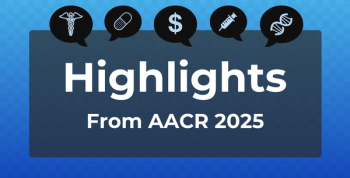
Successfully Engaging Opioid-Dependent Patients in Addiction Treatment
Opioid-dependent patients treated at an emergency department (ED) who were given buprenorphine were more likely to engage in addiction treatment to reduce their opioid use, according to a study published in JAMA.
Opioid-dependent patients treated at an emergency department (ED) who were given buprenorphine were more likely to engage in addiction treatment to reduce their opioid use, according to a study
The researchers randomized patients into 3 groups: the referral group (104 patients), the brief intervention group (111 patients), and the buprenorphine treatment group (114 patients). They then tested the efficacy of these 3 interventions
“Opioid dependence and overdose is an escalating problem that has really reached epidemic proportions here in the US,” Gail D’Onofrio, MD, first author and chair of emergency medicine at Yale School of Medicine, said in a video interview with JAMA. “The emergency department is often the place where patients with opioid dependence seek their care, so it makes sense that this would be the place where we would try to screen and intervene for this very significant problem.”
The patients who were in the buprenorphine treatment group showed a significant increase in engagement in addiction treatment compared to patients in the brief intervention and referral groups. ED-initiated buprenorphine also reduced self-reported illicit opioid use.
“Buprenorphine does require special training and a waiver from the FDA in order to prescribe it, which does set up some barriers,” Dr D’Onofrio said.
More than three-fourths (78%) of the buprenorphine group was engaged in treatment by the end of the 30 days compared with 37% and 45% of the referral and brief intervention groups, respectively. In addition the mean number of days of illicit opioid use per week was down to 0.9 days from 5.4 days in the buprenorphine group compared with 2.3 days from 54 in the referral group and 2.4 days from 5.6 in the brief intervention group.
However, across treatment groups there was little difference in the rate of opioid negative urine toxicology test results.
The researchers also reported that patients in the buprenorphine group were less likely to use inpatient addiction treatment services, which suggests that the treatment may be more efficient and less costly.
“Effectively linking ED-initiated buprenorphine treatment to ongoing treatment in primary care represents an exciting new model for engaging patients who are dependent on opioids into state-of-the-art care,” Patrick G. O’Connor, MD, MPH, FACP, professor of medicine and chief of general internal medicine at Yale School of Medicine and study co-author,
Newsletter
Stay ahead of policy, cost, and value—subscribe to AJMC for expert insights at the intersection of clinical care and health economics.









































